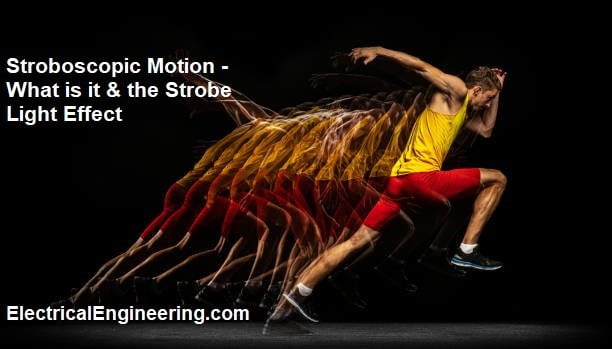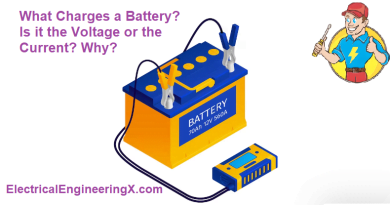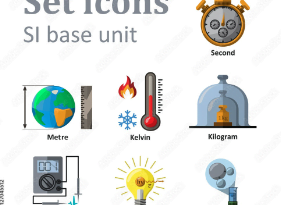Stroboscopic Motion – What is it & the Strobe Light Effect
Stroboscopic Motion: What is it? (And the Strobe Light Effect)
Stroboscopic motion, or the stroboscopic effect, is an optical illusion when a flashing light source illuminates a periodically moving object. The flashing light causes the moving object to appear as though it is stationary or moving in slow motion. This exciting phenomenon has many applications and helps explain how we perceive motion.
Stroboscopic motion, often experienced through strobe lights, is a captivating visual phenomenon that has intrigued and fascinated people for decades. It can freeze fast-moving objects, creating an illusion of slow motion or even stillness. But what exactly is stroboscopic motion, and how does it work?
What is Stroboscopic Motion?
Stroboscopic motion is an illusion that can occur when a strobe light or other flickering light source illuminates a quickly moving object. Our brains have persistence of vision, meaning we retain an image for a fraction of a second even after it has disappeared. So when a flashing light illuminates the moving object only at certain intervals, our brains “fill in” the missing motion, making it appear as if the thing is moving slower than it actually is or even standing entirely still.

The Stroboscopic Effect
The stroboscopic effect is the name given to this illusion, specifically when caused by a strobe light. Strobe lights flash on and off very quickly, up to hundreds of times per second. They create a strobe-like effect that can alter the appearance of motion.
How Stroboscopic Motion Works
Here’s a simple example to understand how stroboscopic motion works:
Imagine a ceiling fan with blades that are rotating quickly. If you illuminate the fan with a strobe light flashing at the same frequency as the fan blades, the blades will appear to stand still rather than spin. This is because the strobe light only captures the blade in a certain position each time it flashes. Our brain fills in the gaps between flashes, so the blade seems frozen rather than continuing its rotation.
By adjusting the flashing rate of the strobe, you can alter the perceived motion. A faster flash rate will make the fan appear to spin slower or backward.
Examples of Stroboscopic Motion
Stroboscopic motion can occur in many situations:
- A disco ball illuminated by a strobe light appears to move slowly or stand still.
- Spokes on a turning wheel can seem stationary when lit by a flashing light.
- A hummingbird’s wings may appear frozen when captured with a camera flash.
- LED lights on cars moving at high speeds can seem like slower-moving light trails.
The effect helps explain why wagon wheels sometimes appear to spin backward in old Western movies. The film frame rate created a stroboscopic effect on the moving wheels.
The Strobe Light Effect
While stroboscopic motion refers to the overall illusion, the strobe light effect is specifically the effect created by a strobe light. Let’s look at how strobe lights produce this visual effect.
How Strobe Lights Create the Effect
Strobe lights produce quick, repetitive flashes of light. The light source may be a flash tube, LED, or incandescent lamp. A strobe circuit controls the on/off timing of the flashes. Adjusting the flash rate alters the strobe effect.
Strobe lights typically have a flash rate of 1-20 flashes per second. Their high-intensity light flashes briefly, leaving darkened intervals between flashes. Our eyes and brains merge the flashes, filling the motion between them. This creates the illusion of slowed or frozen movement.
Uses of Strobe Lights
Strobe lights have many uses that take advantage of their unique effects. For example:
- Photography: Strobes are used to “freeze” motion with a flashing light. High-speed photography uses strobe lights to capture fast motion.
- Clubs: Strobes create cool lighting effects on dancers in clubs and raves. The stroboscopic effect adds visual interest.
- Safety: Strobe lights provide warning signals on vehicles like ambulances and construction equipment.
- Research: Stroboscopes help visualize motion in science and industry, like analyzing vibration in machinery.
Potential Dangers of Strobe Lights
While applicable, strobe lights can potentially trigger seizures in those susceptible to photosensitive epilepsy. Flashing lights at specific frequencies (5-30 flashes/second) will likely cause problems. Using strobe lights safely means being aware of these potential dangers.
The Science Behind Stroboscopic Motion
Scientifically, stroboscopic motion can be explained by several visual perception phenomena that play with how our brains process images over time.
Persistence of Vision
This is the idea that visual information persists in our vision system even after a stimulus has stopped. So our perception lags slightly behind reality, leaving a brief “afterimage.” This allows us to merge the strobe light flashes into a continuous motion.
Phi Phenomenon
Also called the phi effect, it causes our brains to perceive a series of flashing lights as continuous motion or a smooth trajectory if appropriately timed. It fills in the gaps between flashes.
Beta Movement
This refers to seeing motion when there is only a sequence of static images, like a sequence of still photos turning into a “movie.” Our minds connect the sequential images.
These visual mechanisms all contribute to the illusions of stroboscopic motion. Scientists are still studying how our brains process temporal information to generate these effects.
Applications of Stroboscopic Motion
The cool effects of stroboscopic motion lend themselves to many exciting and essential applications.
Entertainment
As mentioned, strobe lights are popular in nightclubs and concerts for visual interest. The stroboscopic effect creates captivating visuals of dancers in a “freeze frame.” Strobe lights are also used in magic tricks and illusions to alter perceived motion.
Research
Science and industry use stroboscopes for analyzing motion that is difficult to see. High-speed stroboscopic cameras can capture processes that are too fast for the naked eye. Stroboscopic lighting helps visualize and measure vibration in machinery like turbine blades.
Medical Diagnostics
Stroboscopes assist doctors in specialties like otolaryngology and speech therapy. They use strobe lights to view vocal cord motion and assess voice disorders. The effect slows down the rapid vocal cord vibrations to allow better visualization.
Future Trends and Innovations
The world of stroboscopic motion is not standing still. Emerging technologies and innovations are pushing the boundaries of what’s possible. We’ll discuss potential applications and trends in stroboscopic effects that could reshape various industries.
Final Thoughts
Stroboscopic motion gives us a glimpse into the marvels of visual perception. While it may seem like we see the world continuously, our vision relies on a complex interpretive process, stitching discrete images together into an artificial sense of smooth, seamless motion. So next time you see a strobe light effect, remember it’s fascinatingly tricking your brain!
Frequently Asked Questions
Q: At what frequency do strobe lights typically flash?
A: Strobe lights generally flash between 1-20 flashes per second, maximizing the stroboscopic effects on our eyes. Faster speeds of up to 50-100 beats per second may be used in high-speed photography strobes.
Q: Does the strobe light effect work on video cameras?
A: The effect can work on video cameras because they capture images as discrete frames. Adjusting the frame rate relative to the strobe frequency will alter the motion’s appearance.
Q: Can strobe lights trigger seizures?
A: Yes, strobe lights flashing at specific frequencies can potentially trigger seizures in those with photosensitive epilepsy. Flashing rates of 5-30 flashes per second are most likely to cause this problem.
Q: How do actors move naturally on high frame rate cameras?
A: Higher camera frame rates reduce the stroboscopic effect, so motion appears smoother and more natural. Actors must still move at realistic speeds to look natural in high FPS filming.
Q: Why do car wheels appear to spin backward on film?
A: This wagon wheel effect happens when the camera’s frame rate syncs with the turning wheel’s speed. The strobe effect makes the motion appear to reverse.
Q: Can you create a strobe effect without a real strobe light?
A: You can mimic a strobe effect by quickly flashing any light source, like flicking a flashlight on and off. Actual strobe lights use special circuitry to control precise flash timing.
Q: What causes the “light trails” look when photographing cars at night?
A: This is caused by the stroboscopic effect. The more prolonged exposure captures the moving lights at different points in their motion, creating light trails as the car moves.
Q: How do artists use the phi phenomenon in motion graphics?
A: By leveraging the phi effect, animators can create believable motion using only a few still keyframes. Our brains fill in the intermediate motion.
Q: Can you experience the phi phenomenon with other senses besides vision?
A: Yes, phi phenomena occur in other senses, too. Auditory phi makes us hear a sequence of tones as a continuous melody rather than individual notes.
Q: Why do tattoo artists use strobe lights?
A: The strobing effect helps steady the artist’s vision by reducing the perceived motion of their clients. This allows finer work on the intricate tattoo details.
MCQs
1. Can stroboscopic motion create the illusion of objects moving backward?
Yes, by adjusting the timing and frequency of strobe flashes, it’s possible to create illusions of objects moving in different directions, including backward.
2. Are there health risks associated with prolonged exposure to strobe lights?
Prolonged exposure to strobe lights can lead to discomfort or health issues for some individuals, such as seizures in those with photosensitive epilepsy. It’s essential to use strobe lights responsibly.
3. How do strobe lights benefit athletes in sports training?
Stroboscopic training with strobe lights can improve athletes’ reaction time, visual processing, and decision-making abilities, enhancing their overall performance.
4. Are consumer-level strobe lights available to create stroboscopic effects at home?
Yes, consumer-grade strobe lights and devices are designed to create stroboscopic motion experiences at home.
5. Can stroboscopic motion be used in virtual reality (VR) and gaming?
Yes, stroboscopic effects are sometimes integrated into VR and gaming experiences to enhance immersion and visual effects.
6. What is the scientific principle behind the persistence of vision in stroboscopic motion?
Persistence of vision is the phenomenon where our retina retains an image for a short duration, allowing us to perceive continuous motion even when there are gaps in the visual stimuli.
7. Are there any safety guidelines for strobe lights at events and parties?
Event organizers should follow safety guidelines to prevent overexposure to strobe lights and provide warnings for attendees who may be sensitive to such effects.
8. How do scientists use stroboscopic motion in experiments and research?
Scientists use stroboscopic motion to analyze fast-moving objects, capture high-speed events, and study periodic motion in various fields such as physics, biology, and engineering.
9. Can stroboscopic motion be applied in medical diagnostics or treatments?
Some medical procedures use stroboscopic motion, such as strobe lights, to examine vocal cord vibrations during laryngoscopy.




